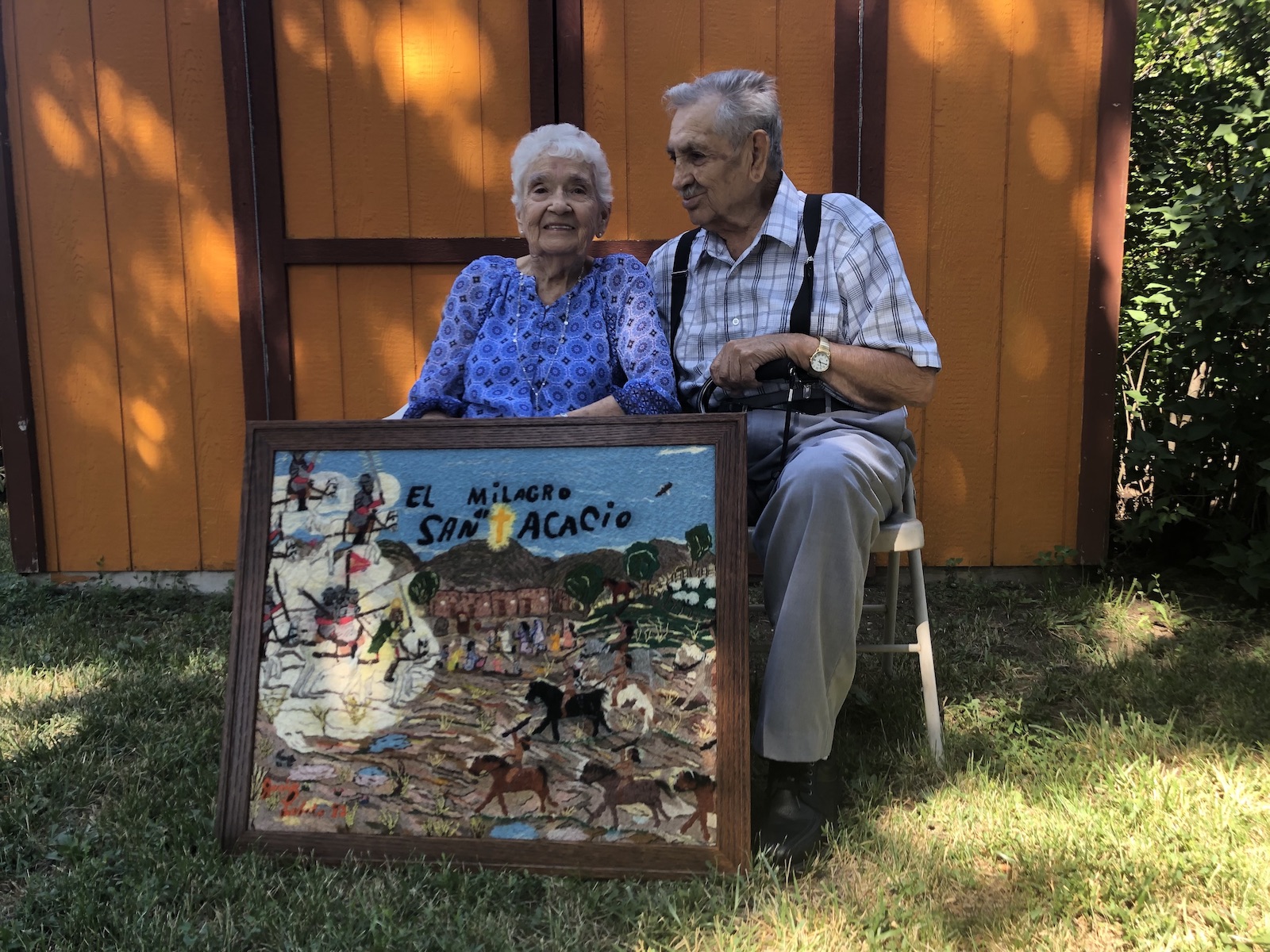The Local newsletter is your free, daily guide to life in Colorado. For locals, by locals.
Josephine Lobato is a history buff. Specifically, the 84-year-old needlework artist is drawn to the stories of San Luis, a small town with a population of about 750 that’s about as far south in Colorado as you can get. This is where she grew up, met her husband of 66 years, Buddy, and worked at the historic Fort Garland Museum for the majority of her life. Luckily for Lobato, San Luis has an extensive past to share: It’s also the oldest town in the Centennial State.
Almost every day for 31 years, Lobato picked up a needle and wool yarn and meticulously depicted threaded tales of her hometown. The stories range from classical Mexican folktales, such as that of La Llorona or “The Weeping Woman,” to her own childhood memories, like when the local flour mill burned down. Unlike other embroiderers, she practices one stitch, called colcha, which originates from Spanish Colonial-style needlework and is thought to be one of the oldest stitches in the world. Lobato is the only artist in Colorado known to work specifically with the colcha stitch, and in June, her revival of the art awarded her the prestigious National Heritage Fellowship from the the National Endowment for the Arts (NEA)—the highest honor in folk and traditional art.

Lobato wasn’t always the embroidery expert she is today. When one looks at Lobato’s works, which seem to move with color and life, they might assume that she learned colcha from her Mexican grandmother, who was familiar with many embroidery techniques. Surprisingly, Lobato didn’t begin to work with a needle until her 50s, when she happened upon a stitching workshop at Sangre de Cristo Parish in San Luis. She says the class changed her life. While listening to the speaker, she asked herself, “Why can’t I do this? I have a good imagination.” She says she knew: “This is how I am going to preserve my community.”
Lobato began her artistic career by recreating an image of the nearby Fort Garland, which was established in 1858 to protect settlers in the valley (military history is a particular interest of hers). She put in endless hours redoing the stitching over and over again, and studied the meticulous embroidery at the museum where she worked—such as one particular piece titled “the Tree of Life.” She even attended college art classes to perfect her craft. The hardest thing to stitch? “Dirt. You have no idea how many colors dirt has, and what direction dirt goes,” she says.
Finally, after a year of hard work, she felt like she had created something to be proud of. But instead of taking a breather from her art after one project was complete, she immediately started on the next one. Her goal was simple: “To make sure all of these stories didn’t disappear.” She started off small, using the tapestries to tell her eight children about the place where she and Buddy grew up (they relocated to Westminster in 2009). In fact, she led her daughters, Rachele and Jacinta, through the story of La Llorona and taught them how to create their own colcha version.
But everything changed when Suzanne P. MacAulay, a historian, folklorist, and professor at the University of Colorado Colorado Springs, came to visit the museum where Lobato worked. MacAulay was floored by Lobato’s unique works—so much so that she wrote a whole chapter about her in her book, Stitching Rites: Colcha Embroidery Along the Northern Rio Grande. It was MacAulay who nominated Lobato for the NEA award in 2017.
For two years they didn’t hear from the NEA. Then, one April morning in 2019, Lobato got a phone call from Colorado Sen. Michael Bennet. “I thought it was a prank caller when he called,” she says. “I almost hung up on him.” Bennet informed her that she had won the National Heritage Fellowship. Lobato says she was shocked. She knew that the stories that shaped her culture were worth sharing, but it hit her hard when she realized that others would recognize their importance, as well. “I think people are waking up to their own history,” she says. “It was dormant for many years, but now they are waking up.”
This September, Lobato will fly with her husband and kids to Washington, D.C. to receive her award. Now, it’s not just her children who will know the history of San Luis, but also people across America.
Editor’s Note: A previous version of this article stated Lobato’s embroidery would be displayed at the Smithsonian in Washington D.C. 5280 regrets the error.








